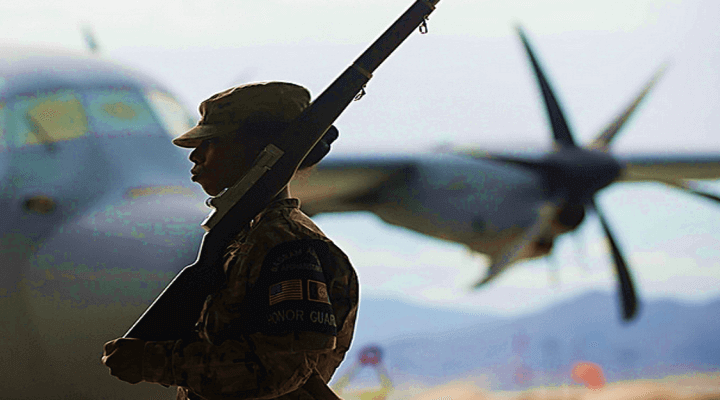This year, the U.S. Military will open all of its previously closed combat positions to women. For lack of a better phrase, it’s a big deal. It means that the military is finally putting men and women on equal footing in the workplace. A woman wants to drive a tank? Sign her up. A woman wants to lead an infantry unit? No problem. A woman wants to fly a helicopter as part of an elite special operations team? For the love of equality, yes.
All in all, about 220,000 previously closed positions, or roughly 10 percent of the active and reserve force, will be opened up to women this year. Can I get a hooah?
But with all the changes going on now, it makes me wonder about the future. Is it possible that putting women in combat jobs now will mean more women in defense jobs once they leave the military? Could this be a long-term shift in the defense world?
It’s not an easy question to answer, but there are some factors to consider. For example, how much interest there is among women, what types of jobs are available post-military and of course, the rising star factor. Let’s break it down, shall we?
First, we have to take a hard look at the numbers. And I know what you’re thinking. How is that possible? All of the jobs aren’t even open yet, there can’t possibly be any data. But this decision didn’t happen overnight.
The Army did surveys regarding the integration of women into combat roles and some of the data was released in 2014. The results showed that of the 30,000 women who responded to the survey, only 7.5 percent said they would be interested in an infantry, armor, field artillery or combat engineer position. Not a minuscule number, but not considered overwhelming interest either.
Recent data from the U.S. Army Recruiting Command seems to support the low interest. Since 2012, the Army has opened up nine previously closed military occupational specialities to women. Here are the number of women who chose to enlist in one of those jobs broken down by fiscal year.
*FY13 – 204 women signed up
*FY14 – 244 women signed up
*FY15 – 270 women signed up
The numbers for FY16 are projected at 450 women enlisting in those previously closed jobs (note – projections for the combat jobs about to open aren’t available at this time). Overall, a steady increase, but still low.
And in a 2015 interview, Gen. David Perkins, the head of the Army’s Training and Doctrine Command said, “There just aren’t a lot who want to do it,” when speaking about women taking on combat jobs.
So while women are interested, there probably aren’t enough to make a large impact on those 220,000 jobs about to become accessible to them. But what about those women who do decide to take the plunge into a combat career? Is it possible for them to transfer those skills to a defense job outside the military?
The answer is yes, but like every other job there are limitations. One problem with taking on a combat job is that once you leave the military, your skills and experience aren’t as easily transferred to a civilian role. For example, if you were a nurse in the military, you could easily find employment as a civilian. But say you spent your military time as a cannon crewmember or breaking down doors as part of an infantry unit. The civilian options are a little harder to come by. Women interested in furthering their defense careers after the military may consider going into law enforcement, providing private or personal security, or trying to land a military advisor position with a defense contractor.
It’s also important to note that since these women will have the opportunity to gain the same experience as their male counterparts in the combat world, they will also be just as competitive as their male counterparts in the post-military job market.
Take a look at the intelligence community, for example. Women have long been involved in military intelligence and the numbers for the intelligence community prove how integrated and essential they are to those operations. Part of the ODNI Strategic Human Capital Plan revealed that as of 2012, 43 percent of the intelligence community was made up of women, with 64 percent holding leadership positions. Given some time, there’s no reason women with combat experience couldn’t hold the same percentages when it comes to defense positions.
But will anything *really* change?
I sure hope so. I think the integration of women into combat roles will be gradual and so the integration of women into those male-dominated contracting jobs will also be gradual. It will happen so slowly over time that you probably won’t even notice the small shifts here and there.
That being said, there’s also the “rising star” factor that we’ve completely overlooked. The biggest thing to come out of opening up combat roles to women is opportunity. This means that a woman coming out of West Point can follow the same career path that retired Army Gen. David Petraeus did. It means that these women, who will fight their way through the combat ranks, have the potential to become military stars. And once you become a star, you have the opportunity to make real changes to policy, to the military, to the government itself. And if they make it that far, it’s likely those women will also be offered high-speed jobs outside the military where they can continue to shape the defense industry from positions of power. The possibilities are endless.
So do I think the defense industry will change because women can hold combat positions? Absolutely. Only time will tell how much of an impact these women will have on the defense industry, but now they’ll have the opportunity to try. And that’s really what matters, isn’t it?




